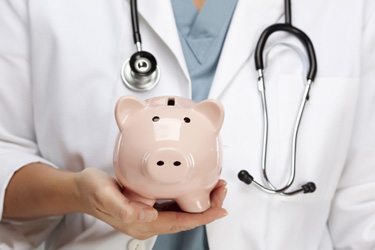One of New York’s 2.7 Million Uninsured Asks: Will I Finally Be Able to Afford Health Insurance?
Since January 2012, I’ve relied on healthy eating habits, home remedies, rest, and prayer: “Lord, please don’t let me get hit by a car when I ride my bike today. Allow for safe travels. Amen.”

This piece is published in collaboration with Echoing Ida, a Strong Families project.
I am one of nearly 2.7 million New Yorkers (approximately 16 percent of the state’s population) under age 65 who does not have health insurance coverage. Since January 2012, I’ve relied on healthy eating habits, home remedies, rest, and prayer: “Lord, please don’t let me get hit by a car when I ride my bike today. Allow for safe travels. Amen.”
I come from a family full of Black women who work as nurses and in other health-care professions, so visiting the doctor has been a habit and priority my entire life. That is, until it no longer fit into my budget. After paying for rent, ever-increasing public transportation in New York City, student loans, food, and utilities, not to mention my debt payments and household needs, there is barely enough left over to save, let alone pay for health insurance out-of-pocket.
For the past couple of years, the combination of unemployment insurance benefits, part-time jobs, and side gigs has made me ineligible for Medicaid and other state funded health-care programs. And during the moments when I relied on unemployment insurance alone, my income was still too high for me to qualify for subsidized health care. When the Affordable Care Act changed the rules so that young adults could be covered through their parent’s health insurance, I was employed at a full-time job with health benefits. My job ended soon after I turned 27, a year too old to qualify.
While health care is a priority for me, I have anxiety about paying out-of-pocket for insurance. If I go to the doctor, something else will have to be sacrificed. What bill can be paid late? What can I do without? When money is limited, every payment becomes relative. So now my approach to health care is based on emergency, urgency, and resourcefulness. If I have an issue that will resolve on its own, I leave it alone. The best charity care I’ve heard of is in Manhattan, so if ever there is an emergency, I will be traveling outside of my borough, Brooklyn. And I’ve got Planned Parenthood in my back pocket in case of a urinary tract infection or severe yeast infection, because I know they offer affordable, sliding-scale options.
Whether searching for the most affordable public clinic or researching insurance plans, those of us who are uninsured aren’t ignoring our health—we’re making the best of what’s available.
Before this recent lapse, the last time I had been uninsured was in 2008. A recent graduate from college, I needed a series of vaccinations and tests so I could travel to Ghana for a fellowship. I spent over $300 on a bare-bones health insurance plan and still paid out-of-pocket for some of my bloodwork, medicines, and tests. When it felt like paying for private health insurance was out of my reach, I did some research on public health-care facilities and community clinics. When it came down to it, there was no way around the expense. Want to see a doctor? You pay extra. Can’t pay it all up front? You’re not off the hook. Need to see a specialist? It’ll be a part-time job just to file the paperwork. When you’re uninsured, the decision often becomes one of life or death. If it isn’t either, why bother?
As I prepare for the New York state health insurance exchange roll-out as part of the Affordable Care Act, I am filled with both anxiety and hope. The idea of having coverage again is exciting. Wow—is it possible I can see a doctor without compromising my other financial obligations? It’s been too long. But will it be time-consuming to navigate the exchange? Are competent people available to accurately answer my questions and help me figure out the best insurance plan? What, if any, subsidies do I qualify for? Will the subsidies be enough?
In my first perusal of the New York State of Health website, my anxiety is mildly relieved. The language on the website is easy for me to understand, and the website seems easy enough to navigate. Open enrollment begins October 1, so there is little information about the insurance plans now; however, how the marketplace will work is clearly spelled out. Insurance plans that will be offered through the marketplace fall into four categories: bronze, silver, gold, and platinum. While every plan is required to provide ten “essential health benefits,” the plans have different values to accomodate various health-care needs.
New York’s exchange seems promising. It anticipates enrollment will take about an hour to complete online or on the phone (and less time for people who do not need subsidies). Community organizations are partnering with the exchange to enroll individuals and families.
As a person who manages multiple sources of income, it is a relief to know health insurance premiums may be reduced further if my income is below 400 percent of the federal poverty level. And as an activist, I’m excited to see health disparities acknowledged as part of the framework of the exchange.
Perhaps the conundrum of earning too much to qualify for public programs like Medicaid, but not enough to buy coverage on my own, will be resolved. We’ll see. Time will tell.
